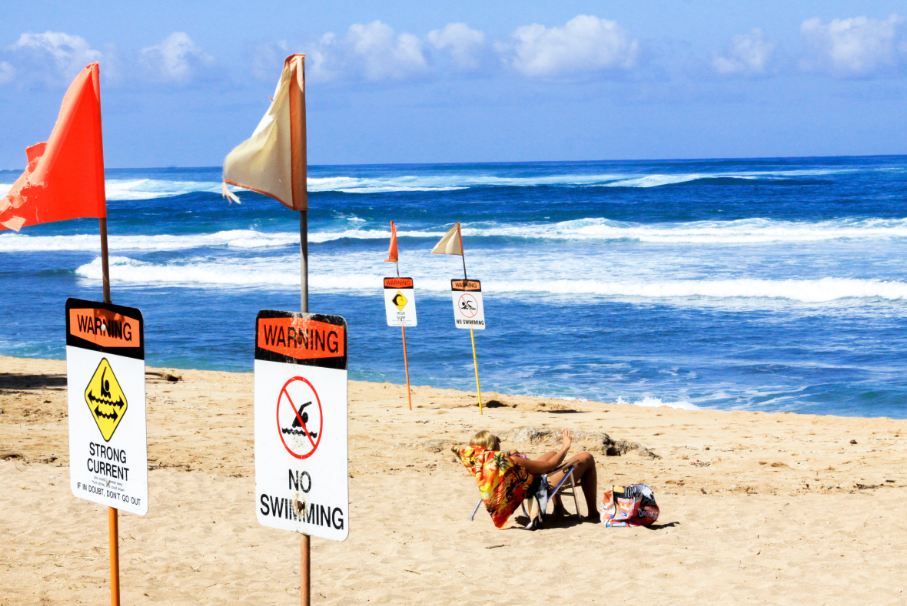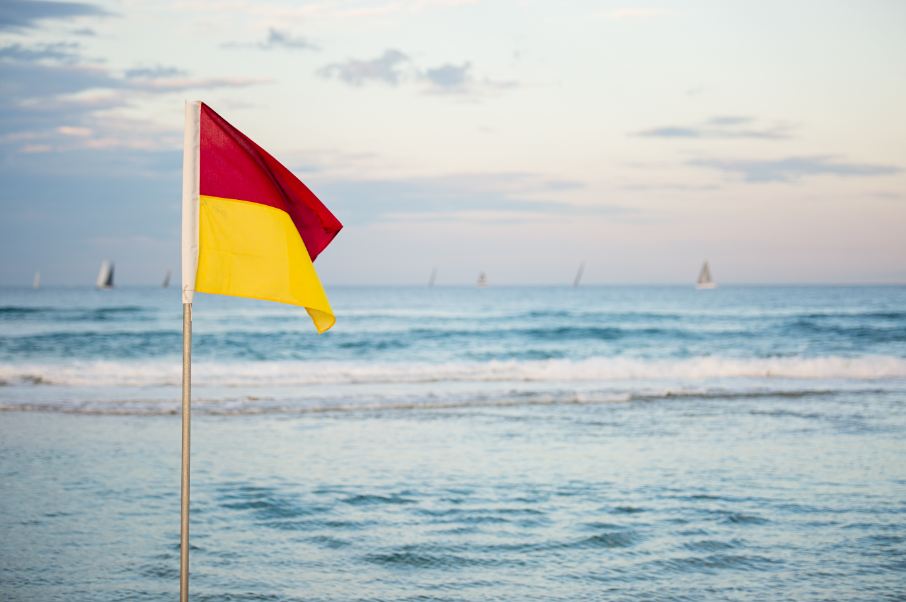On beaches, to avoid potential safety risks,universal beach flags are widely used. Have you seen these flags near lifeguard services on the beach but don’t know the meaning of these flags?Well, in this article, we will tell you about variousuniversal beach flags and their meanings.
These flags play an essential role on beaches and help in maintaining risk and safety management. Many people don’t take these flags seriously as they are unaware of their meanings. Information related to these flags is very important to understand before going to the beach.
Importance
These international beach flags are directed by the International Life Saving Federation & the United States Lifesaving Association. The importance of the flags is prominent because the global membership of ILS approves the values for beach safety.
Flags are considered traditional devices for providing information to people on beaches. As they are simple, consisting of just colors, which are easily understandable by any layman, they reduce language barriers and decrease aquatic risks and dangers. But ILS also focused on the fact that warning flags are useless without lifeguards.
International Flags and Their Meaning
1. Yellow Flags
The yellow flag demonstrates that the ocean is rough and high waves are expected. It is considered a sign of warning, just like a yellow traffic light. When you see a yellow flag on the ocean, it means that surf presents a medium hazard, and there are chances of dangerous currents or small rip currents.
In such conditions, always swim near lifeguards and pay attention to all the warnings given by them. If you are a weak swimmer or carrying a child with you in the sea, use life jackets. On yellow flag days, it is highly recommended to swim under the supervision of an adult. This flag is the most widely seen one on beaches. Even some beaches have yellow flags on a daily basis because of rocks and bait fishes.
2. Red Flags
A red flag is the most serious warning flag out of all international beach flags. It represents that conditions are extremely dangerous, but swimming is not completely prohibited. On red beach flag day, huge waves with large currents are expected. ISO defines red flag as “don’t enter the water,” while according to ILS, red flags means “High Hazard.”
Weak swimmers are not allowed to enter the ocean if a red flag is raised on the beach. If you are an excellent swimmer,you might go into the water; otherwise, stay away. And even if you are a good swimmer, swim with a friend.
3. Red over Red Flags
Where a red flag means an extremely dangerous situation, two red flags or red over red flags demonstrate that the conditions are more than dangerous. Even professional swimmers are not allowed to enter the water. In red over red flag situations, swimming is considered completely prohibited. According to ISO, two red flags mean “don’t enter the water.”
On some beaches, lifeguards have the authority to stop people from entering the water. But local lifeguards don’t have this authority as they can’t stop people from going into the water. So, whenever you see a red over the red flag on the beach, stay away from water as it means threatening your life.
4. Green Flags
The green flag is just like a green traffic signal. It is a complete reverse of red over the red flag. The green flag shows that the surfing conditions are calm and under control. There is nothing to be worried about;hence, you can swim freely and enjoy a sunny day on the beach. However, one should always take precautions because the ocean is always unpredictable.
Although the green flag represents clear conditions and the chances of risks are low, make sure to check out all the lifeguard warnings beforehand and pay special attention toward children. In the green flag situation, you can enjoy using any water sports gear, such as surfboards and bodyboards. Unlike red and yellow flags, this flag is like a sign of “go swimming.”
5. Purple Flag
You might don’t know about the purple flag, as most people never consider it. When they see a purple flag, they just ignore it and go straight into the water without any precaution thinking that conditions are clear and safe. But to your shock, this flag is as dangerous as a red flag.
A purple flag demonstrates the presence of marine pests. Now, you might be wondering what marine pests are. It means a variety of dangerous marine animals like jellyfishes, sharks, and algae are present in the water. Just like a red flag, a purple flag means swim at your own risk.
When a purple flag is raised on the beach, it is recommended not to go into the water or keep an eye on animals. When you see it, make sure to talk to your lifeguard before entering the water and take all the precautions because these marine animals can change a fun beach day into a worse day. The attacks of certain marine animals like sharks, whales, or square jellyfish can be fatal. Purple flags are always used in combination with any other color flag, normally with a blue one.
6. Yellow and Red Flag
If you encounter a flag half red and half yellow, it means that lifeguards are on duty. It does not demonstrate any danger. A yellow and red flag is used to enhance the safety and security of people on the beach. Hence, it means that you can swim in that chosen area between two yellow and red flags.
According to ILS, it “indicates a designated area or zone along a beach or waterfront that is most closely supervised or patrolled by qualified lifeguards.” So, whenever you see a flag with yellow and red colors,you can swim in that area without any problem.
7. A White Flag with an Animal
This international beach flag is just like a purple flag. When you see a white flag with an animal, it demonstrates that the presence of many marine animals like (sharks, jellyfish) is confirmed. Therefore, it is highly recommended not to enter the water when lifeguards have used this flag.
8. A Black and White (Quartered) Flag
A black and white international flag means that the area is secured for watercraft only. The areas with these flags demonstrate that they are only for surfers and Malibu boards. Swimmers and bathers are prohibited from entering this area. The purpose of this flag is to avoid accidents of surfers or beachgoers, with swimmers ensuring the safety of all three.
9. A Yellow Flag with a Black Ball
This flag is the exact opposite of the black and white international beach flag. Where an area with a black and white flag allows surfers and watercraft, a yellow flag with a black ball prohibits the presence of surfers and allows swimmers and bathers only.
For more information on the international flags, click here.
Conclusion
We hope that you find this information on the international beach flags quite handy. Now, you can enjoy a fun time with your friends and family at the beach as you know that in what conditions you need to be cautious and which area is designated for you. Knowledge of international beach flags is extremely important if you are a beach lover and love going to different beachesworldwide.



